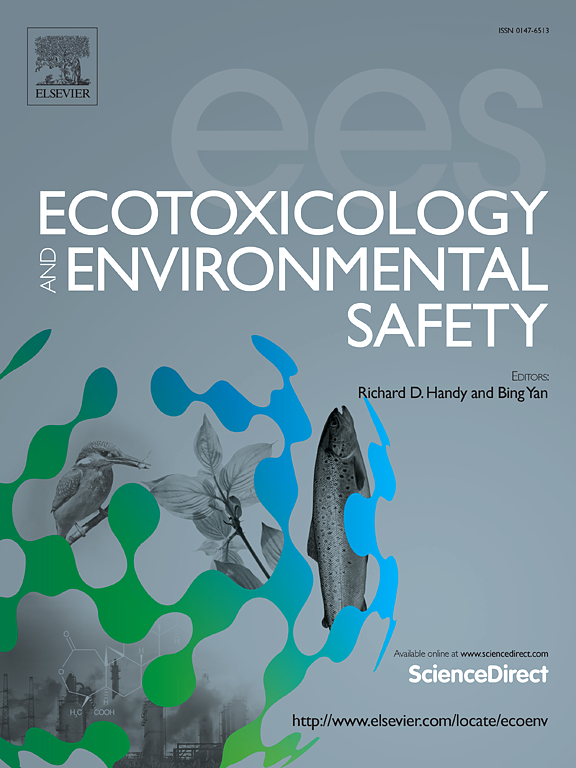Effects of Cu(Ⅱ) stress on embryonic development, oxidative stress response, cholinergic system and energy metabolism in the Sepiella maindroni
IF 6.2
2区 环境科学与生态学
Q1 ENVIRONMENTAL SCIENCES
引用次数: 0
Abstract
In order to investigate the causes of population degradation and resource decline, this thesis investigated the ecotoxicological effects of heavy metal Cu(Ⅱ) on the embryonic development of Sepiella maindroni. Results indicate significant effects of Cu(Ⅱ) concentrations on the developmental toxicity, teratogenicity, and lethality of S. maindroni embryos. Different concentrations of Cu(Ⅱ) caused varying degrees of malformations in embryos, altered developmental rates, reduced hatchability and hatchling quality, and increased malformation and mortality of hatchlings. At the same time, Cu(Ⅱ) exposure led to an increase in the content of the lipid peroxidation product malondialdehyde (MDA) and a significant decrease in the activity of antioxidant enzymes (superoxide dismutase [SOD], catalase [CAT]), energy-metabolizing enzymes (adenylate kinase [AK]), and cholinergic-related enzymes (acetylcholinesterase [AChE], choline acetyltransferase [ChAT]). In conclusion, when the concentration of Cu(Ⅱ) in the environment is ≥ 0.01 mg/L, it causes significant lethality toxicity, developmental toxicity and teratogenicity in S. maindroni embryos. These effects are likely related to Cu(Ⅱ)-induced stress impacting the antioxidant capacity, energy metabolism, and cholinergic system. Ultimately, these toxic effects may lead to population degradation and resource decline in fishery organisms by affecting the early replenishment process of fisheries.
求助全文
约1分钟内获得全文
求助全文
来源期刊
CiteScore
12.10
自引率
5.90%
发文量
1234
审稿时长
88 days
期刊介绍:
Ecotoxicology and Environmental Safety is a multi-disciplinary journal that focuses on understanding the exposure and effects of environmental contamination on organisms including human health. The scope of the journal covers three main themes. The topics within these themes, indicated below, include (but are not limited to) the following: Ecotoxicology、Environmental Chemistry、Environmental Safety etc.

 求助内容:
求助内容: 应助结果提醒方式:
应助结果提醒方式:


